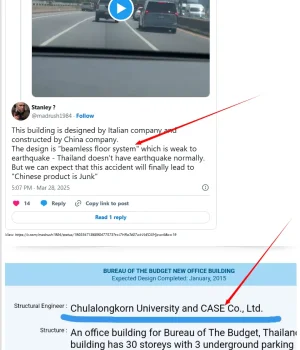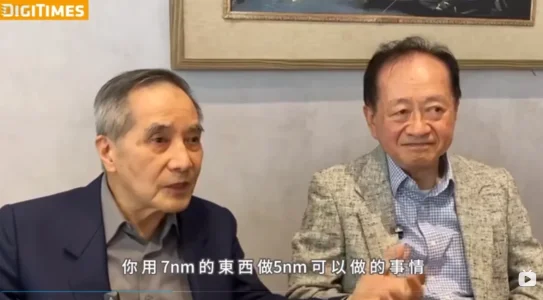- Joined
- Jul 1, 2024
- Messages
- 4,797
- Likes
- 25,191
Are you actually posting video games to back up your argument??! What's wrong with you?
2 billion USD dam? Kanthan is the only Son of a bitch reporting this fake news & why wouldn't he? Coz it's his job to cover up for his paymasters in China.
What do I mean? Just this , that the Chinese man made construction activity in Tibet immediately north of the dam according to this exhaustive study , was one of the contributory factors in the sweeping away of parts of the dam, the immediate cause being the GLOF ( Glacial Lake Outburst Flood) a kind of severe flash flood.
Then how about 200m vesrion?
View: https://x.com/Kanthan2030/status/1666199074176110593?t=-TcuxsAWEPLPK-3--eodmw&s=19
What's this supposed to be? Some sort of game where you keep posting tweets of Indian wumao or put another way, Indian wumao keeps flinging muck on India & inevitably some of it sticks for not everything he posts will be false & deniable. That's the very definition of propaganda.
How about we stick to Thailand & the only structure to collapse in Thailand happened to be built by a Chinese firm ?! What does Indian wumao kanthan have to say in defence of his paymasters in Beijing?

The Chinese semiconductor industry is grappling with a quintessential "chicken-and-egg" dilemma, particularly in its pursuit of advanced lithographic capabilities. Legacy ASML systems, such as older extreme ultraviolet (EUV) and deep ultraviolet (DUV) lithography machines, present an insurmountable reverse-engineering challenge due to proprietary failsafe mechanisms embedded within their architecture. Even Taiwan, with its unparalleled exposure to cutting-edge semiconductor fabrication through TSMC, has not succeeded in independently replicating these systems—underscoring the technological chasm. The intricacy of ASML’s photon projection systems, coupled with their reliance on highly specialized software and hardware integration, renders the notion of "cracking" these machines unfeasible for China in the near term.
For China to achieve self-sufficiency, two divergent paths emerge: either painstakingly iterate through generational advancements in photon-based lithography—mimicking the evolutionary trajectory of ASML and its peers—or pivot entirely toward a disruptive, paradigm-shifting approach to wafer patterning. The former is a multi-decade endeavor, constrained by both technical expertise and access to foundational intellectual property. The latter, however, offers a tantalizing prospect: with an estimated investment of $300–400 billion USD over a decade, China could channel its considerable pool of PhD-level research into novel lithographic techniques, potentially leapfrogging current standards and establishing a new technological benchmark. Recent advancements in light-source technologies, such as laser-produced plasma (LPP) for EUV, or emerging concepts like multi-beam electron lithography, could serve as viable starting points for such an initiative.
However, the Chinese ecosystem faces critical deficiencies in core competencies that undermine both strategies. Even with older ASML platforms, maintenance and operational proficiency remain elusive. These systems rely on intricate configuration software—often encrypted and remotely managed by ASML—leaving Chinese engineers incapable of performing deep-level servicing or modifications. Reports indicate that China has procured a significant number of these machines, yet lacks the domestic capacity to sustain their operational lifecycle independently. ASML’s decision to establish a maintenance hub in China, ostensibly to support academic and industrial research, highlights this dependency—a move that ensures continued oversight rather than technological transfer.
Optics, while a Chinese strength, is insufficient in isolation. The primary bottleneck lies in managing thermal distortions during the lithographic process—a domain where ASML’s expertise remains unrivaled and closely guarded. Heat-induced aberrations in wafer patterning, mitigated through advanced materials and real-time adaptive optics in ASML’s latest systems (e.g., the NXE:3400C), are a trade secret not even fully disclosed to strategic partners like the United States. Without breakthroughs in thermal management, software integration, and precision engineering, China’s ambitions risk stalling at the prototype phase. Propaganda touting self-reliance may sway domestic sentiment, but it holds no sway over the unforgiving physics of sub-7nm node fabrication.
Like sudden appearance of J36 & J50, China always did more talked less, even as Chinese i didn't know before they were online.
Chinese chip industry was pushing two technical routes/makers to produce DUV and EUV, and 5nm is going to be produced this year. One maker is SMEE in Shanghai, one is SiCarrier in Shenzhen.
It's almost like Steam catapult/EMALS of Navy AC, China had two R&D team simultaneously.
View: https://x.com/Ignis_Rex/status/1904873385018220997?t=9-YPVEmnM7qX-iJjgVj-eg&s=19
View: https://x.com/aq_lp0/status/1906517242134802714?t=XadZM27XbsWXmKLUXXJnaA&s=19
View: https://x.com/GuruTrader888/status/1906389534226428407?t=PradyA3KeUHH6gclhOrNKQ&s=19
You are describing the Chinese semiconductor industry five years ago
It was a difficult time for Chinese semiconductors
Today China has climbed over this mountain
I do not recall they said tested in Saudi Arabia but by the Saudis.The video doesn't look authentic, “J-35 tested in Saudi Arabia” that statement alone puts dirt in the eyes of listeners.
Chinese might not be on level of Americans but for sure their engines are maturing from 800 hours now they are reaching double of that pretty close to Russians now.
Remember whole aviation industry military or civilian is based on Turbo Fans if a nation becomes confident in its jet engines fighters and civilian jumbo jets can be manufactured with ease.
Saying Saudia chose Kaan over J-35
Kaan is nothing more than a on surface 5th gen prototype barely flying by older American engines J-35 is miles ahead of so called kaan
Having voluntarily taken retirement from the same industry at the young age after getting my fill in the US, I possess precise, firsthand knowledge of the current state of the CCP-led semiconductor sector, and let me tell you, it’s a shit show worth understanding if you’re not too busy jerking off to outdated tech specs.
I do not recall they said tested in Saudi Arabia but by the Saudis.
J-35 has not real sales internationally, about the quality of their engines? who knows but remember military sales mean allegiances.
Will a nation that buys western buy Chinese military hardware? I doubt it since it means going to the enemy..
Allegiances means economy alliances.
Now consider Russia is selling Su-35 and France, Rafale would not many nations buy J-35?
Having voluntarily taken retirement from the same industry at the young age after getting my fill in the US, I possess precise, firsthand knowledge of the current state of the CCP-led semiconductor sector, and let me tell you, it’s a shit show worth understanding if you’re not too busy jerking off to outdated tech specs.
It is impossible for a retired Boeing employee to predict the J36's appearance and the timing of its
first flight

It is impossible for a retired Boeing employee to predict the J36's appearance and the timing of its
first flight

read well what I am going to say, China will fail, the weapons designed to beat China are not aircraft, only a fool can think a nation that can put an army with 200,000,000 soldiers think that is possible, second the handlers of the world are not in China, China was industrialize by dark forces, the fall of the American empire will not be followed by the Chinese age, China is like Japan in WWII, a needed nuisance, to defeat Russia, and weaken the USA, but the handlers do not want you to win and you will not win.Until the J36 and J50 are in service,
the J35 is unlikely to be sold abroad.

Might be busy finding new rebranding warehouse after Vietnam got a turd on its face.Where are chini bots today, seems like some session is going on wechat to new instructions for Trump tariff push.
